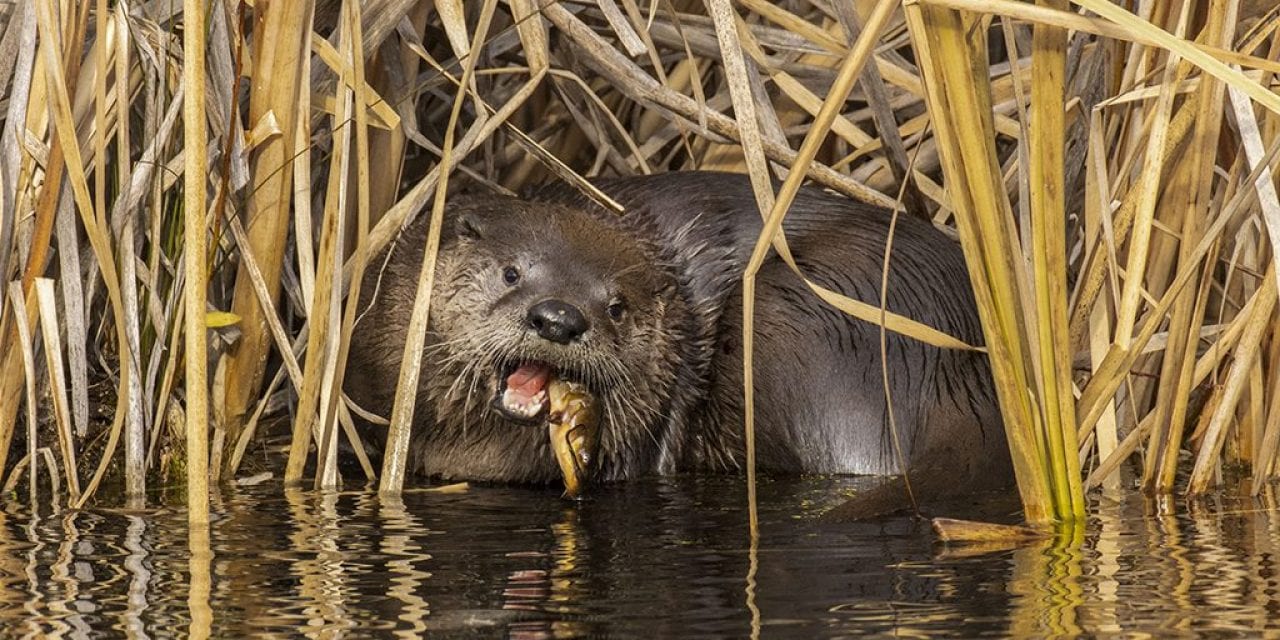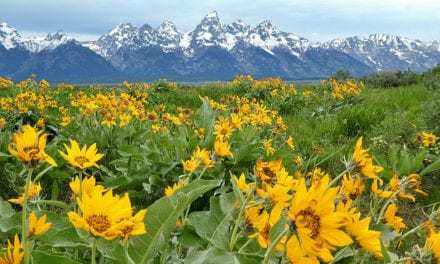Every photographer views new products in personal terms: How will this camera, lens or accessory help me to achieve my photographic goals? When you’ve worked in the business as long as I have, each new photographic tool is also evaluated in the context of its predecessors and, to a lesser extent, the possibilities of the future. That is, how does this equipment meet, advance or disrupt the technological trends?
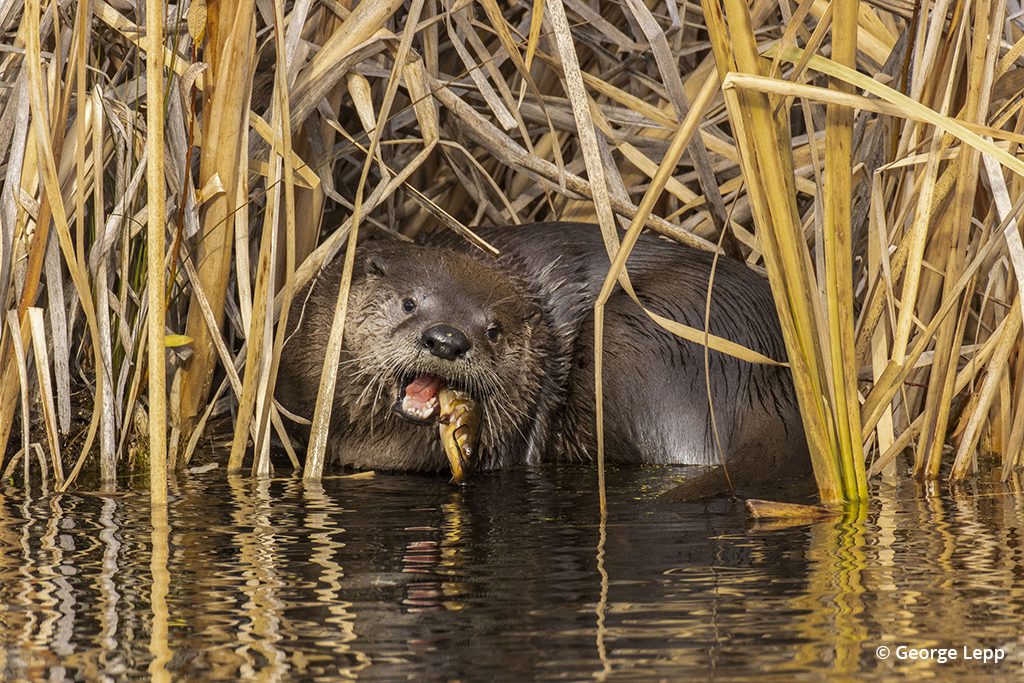
Great Catch. A river otter enjoys a catfish among the cattails edging a lake in Central Oregon. To capture this portrait from the opposite shore with the EOS 90D, Lepp used an EF 600mm f/4L IS III USM lens with an Extender EF 2x III (1200mm), achieving an angle of view of 1920mm with the 1.6x crop factor of the camera’s APS-C sensor. Exposure: 1/250 sec., ƒ/11, ISO 1600.
When it comes to camera bodies, whether DSLR or mirrorless, our current expectations are that new models will offer improved sensitivity, accuracy and speed along with high-resolution video capture and in-camera functions such as focus and exposure bracketing. How does Canon’s new mid-range DSLR, the EOS 90D, stack up to its predecessors and the standards of the moment?
While Canon places the EOS 90D as the linear successor to the 80D, it might also be seen as an upgrade to the professional-level EOS 7D Mark II, which I purchased when it was introduced in late 2014. Fast, at 10 fps, and with an improved autofocus system, the 7D Mark II also captures video in full HD at 60 fps. The 20.2 megapixel APS-C sensor offers a useful 1.6x crop factor, but it’s relatively small, so not as capable at higher ISOs. In 2016, I transitioned to the high-end, 20.2-megapixel full-frame EOS-1D X Mark II, with superb high ISO quality, but I missed the 7D Mark II’s crop factor for when I really needed telephoto reach.
Am I ever satisfied? No, but I’ve hoped for another APS-C camera that improves on the EOS 7D Mark II. In the EOS 90D, Canon combined and upgraded the best features of the 7D Mark II and the 80D, then added 4K video capability, 120 fps full HD video and in-camera focus bracketing. The EOS 90D promises excellent image quality at 1600 ISO, and the APS-C sensor has 32.5 megapixels of resolution.
As you can probably tell, I was intrigued by the EOS 90D’s potential, so I snagged one from Canon and worked with it for about six weeks in a variety of field situations. Here’s what I learned.
Handling
The EOS 90D’s ergonomics are similar to the 80D and 7D Mark II (without the sharp edges found on some other manufacturers’ designs). It is much lighter and smaller than the EOS-1D X Mark II, and while it is dust- and water-resistant, that protection is not as robust as with the larger body. I found it comfortable and stable to work with a full range of lenses in both hand-held and tripod setups.
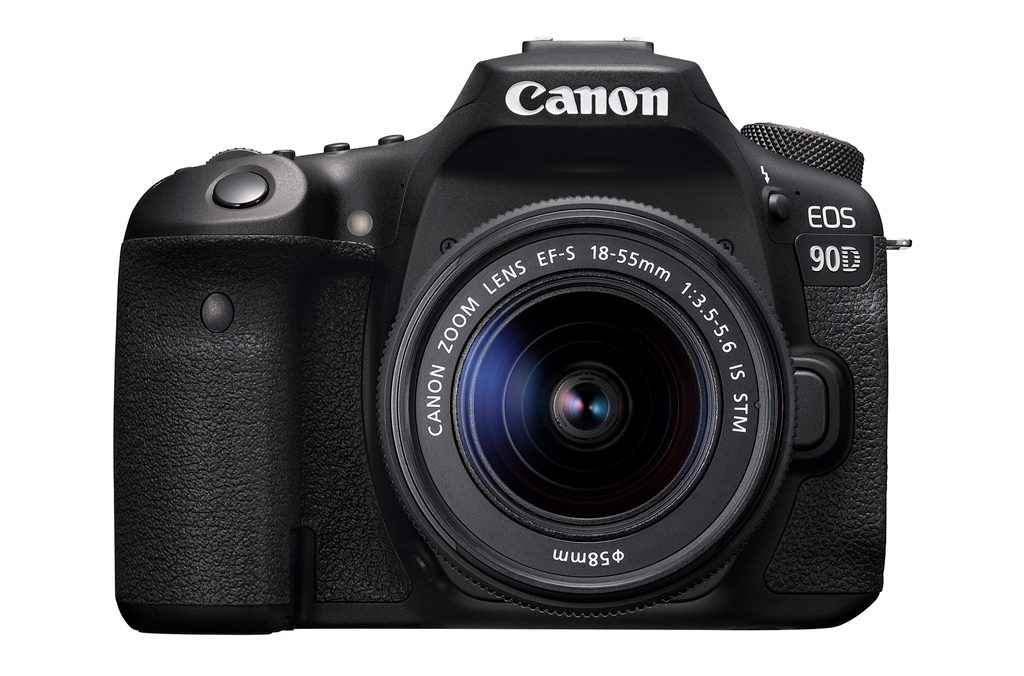
Front view of the Canon EOS 90D.
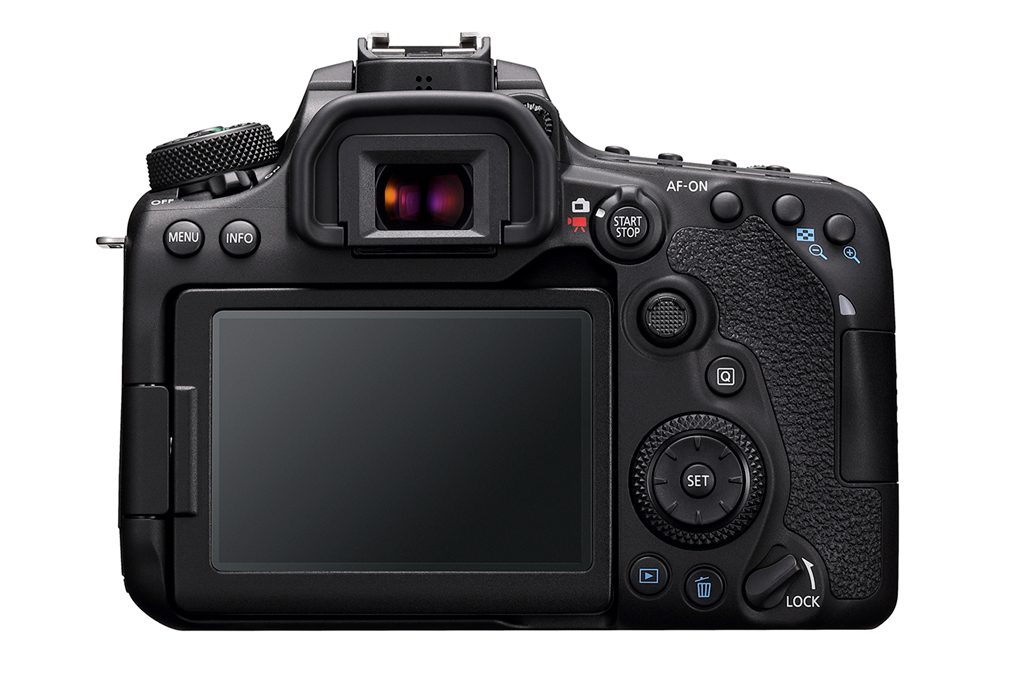
Back view of the Canon EOS 90D.
Speed & Autofocus
The EOS 90D captures at 10 fps with 11 fps possible in Live View. This is a great feature for fast action, such as flying birds, although the benefit was somewhat mitigated by relatively small buffer capacity.
The touchscreen is very helpful for accessing menus and fine-tuning focus in Live View. The AF system has 45 focus points, all cross-type, and 27 of them work up to ƒ/8. My preferred option for action subjects is the expanded nine focusing points, but when I add the Extender EF 1.4x III to the EF 100-400mm f/4.5-5.6L IS II USM, the setup offers just a center focusing point. I’ll have to say, it still works quite well. Other important EOS 90D features that I used were the Multi-Controller joystick and the Vari-Angle LCD.
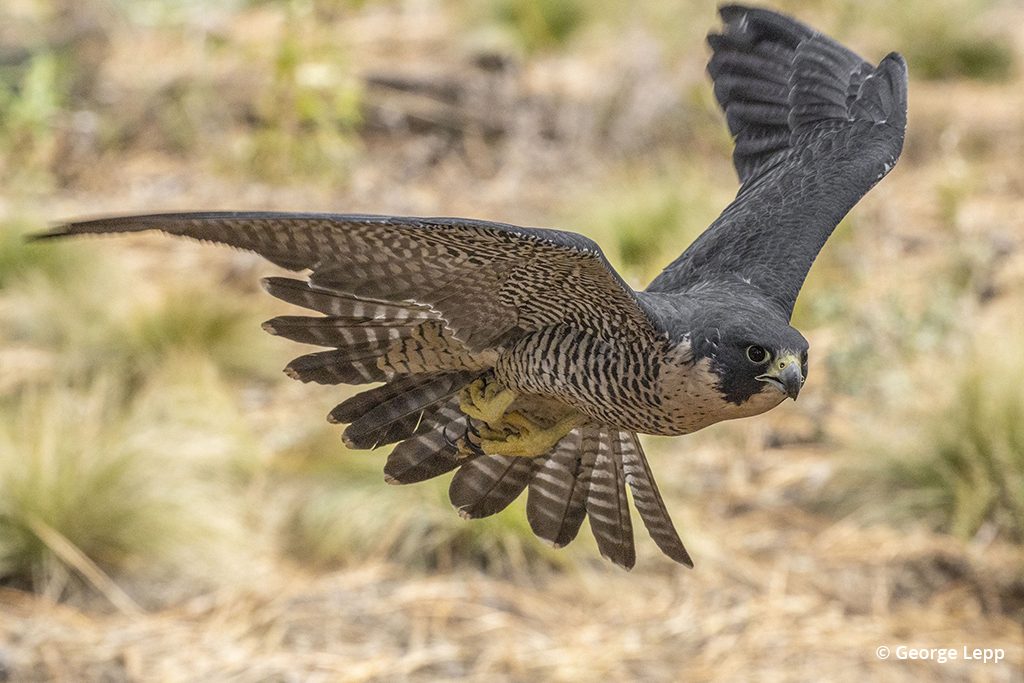
Stop Action. A peregrine falcon (captive) flies close to the ground as it comes around to a falconer’s lure. The EOS 90D’s autofocus was quick enough to enable Lepp to capture this mid-flight image. Canon EOS 90D, Canon EF 100-400mm f/4.5-5.6L IS II USM at 312mm. Exposure: 1/2000 sec., ƒ/11, ISO 1600.
Focus Bracketing (Stacking)
If you follow my work, you know I’m fascinated by focus-stacking techniques that control and/or expand depth of field in subjects as diverse as vast landscapes and complex macros. A relatively new function, in-camera focus bracketing, automates this previously complex process, and the EOS 90D is Canon’s first DSLR to offer it.
Working from a tripod, the photographer selects the desired range of sharpness, from closest to most distant point, then programs the focus increments and number of captures desired. The camera automatically completes the series, which is later assembled in focus-compositing software such as Photoshop, Zerene Stacker or Helicon Focus, yielding a final image with absolute sharpness and detail in the selected area. This function can greatly enhance images of a complicated macro subject, such as an insect or snowflake that might require hundreds of captures, or a scenic that needs only a couple of images to convey sharpness from foreground to infinity. I found that the 90D’s in-camera focus bracketing worked very well with the flowers and butterfly wings I photographed at high magnification for this test.
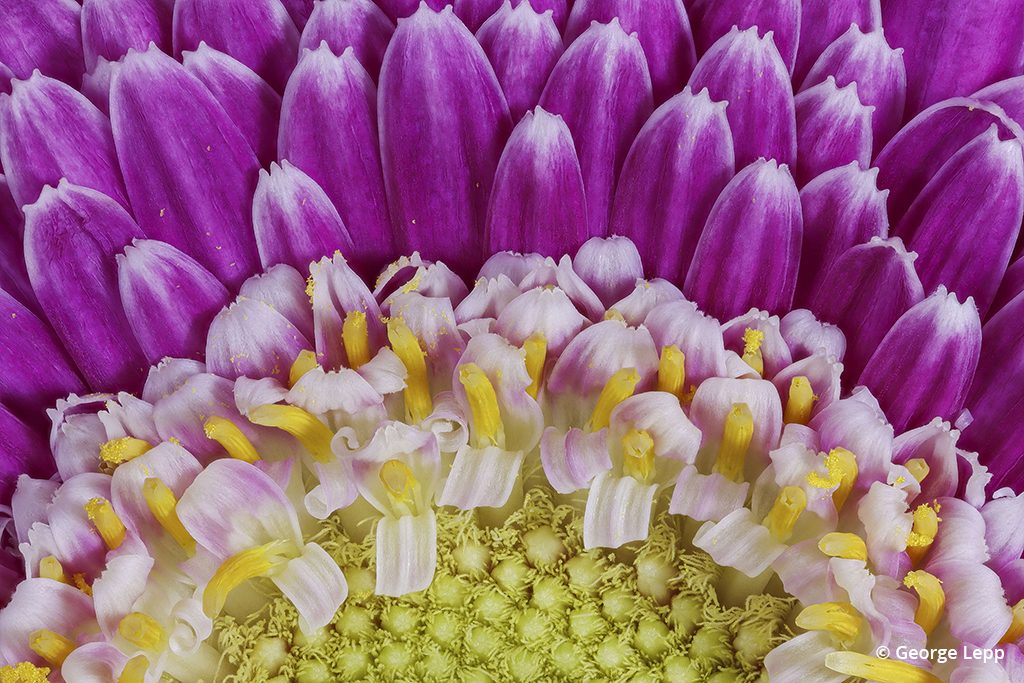
Gerbera Daisy. Lepp used the EOS 90D’s Focus Bracketing function to capture a complex section of a gerbera daisy in high resolution. At 1.6x magnification, 43 images at different focus points were required to achieve total depth of field. The Focus Bracketed images were composited in Zerene Stacker software. Canon EOS 90D, Canon EF 100mm f/2.8L Macro IS USM, 2 Lume Cube LED lights. Exposure: 1/45 sec., ƒ/4.5, ISO 100.
This feature doesn’t work with every lens (consult the manual), but nearly all of Canon’s macro lenses work. Something to keep in mind is that the programmed sequence cannot be delayed between images for a flash to fire, so continuous ambient light is necessary. That’s typically not an issue outdoors; in the studio, I use small LEDs to continuously light the subject.
Canon EOS 90D Video Capabilities
With the recent significant improvements in the quality of DSLR video, I’m using it much more in my outdoor photography to document behavior and/or to pull a high-quality single frame from a 4K video sequence. I took the 90D to a series of refuges to test the video capabilities with a variety of raptors and waterfowl and was pleased with the results.
The 90D captures 4K at 29.97 fps. The 4K is not available on the 80D or 7D Mark II, and it’s a valuable tool for nature photographers. The 4K video in the 90D uses the entire sensor for capture. The 90D also records Slo-Mo at 120 fps in Full HD and 4K time-lapse that can be viewed in the camera.
The Sensor & Image Quality
Earlier in this review, I noted that I had not been satisfied with higher-ISO image quality produced by previous cameras with APS-C sensors. I’m pleased to say that the new 32.5-megapixel image sensor in the 90D is a great improvement (partly due to the new DIGIC 8 processor), and the 1600 ISO I often use now yields excellent results; that’s my go-to ISO to achieve a fast shutter speed or small aperture for increased depth of field. With my macro work in the studio, the sensor produced stellar results at lower ISOs.
My main reason for liking cameras with an APS-C sensor is the 1.6x crop factor. There are those who argue that there is no advantage to a cropped sensor because we could just as well capture with a full-frame body and crop in post. But for me, it’s all about the resulting angle of view that fills the sensor, using the very sharpest central part of my EF lenses. A full-frame rendering might be slightly less sharp to the edges, but they fall outside the capture with the APS-C sensor.
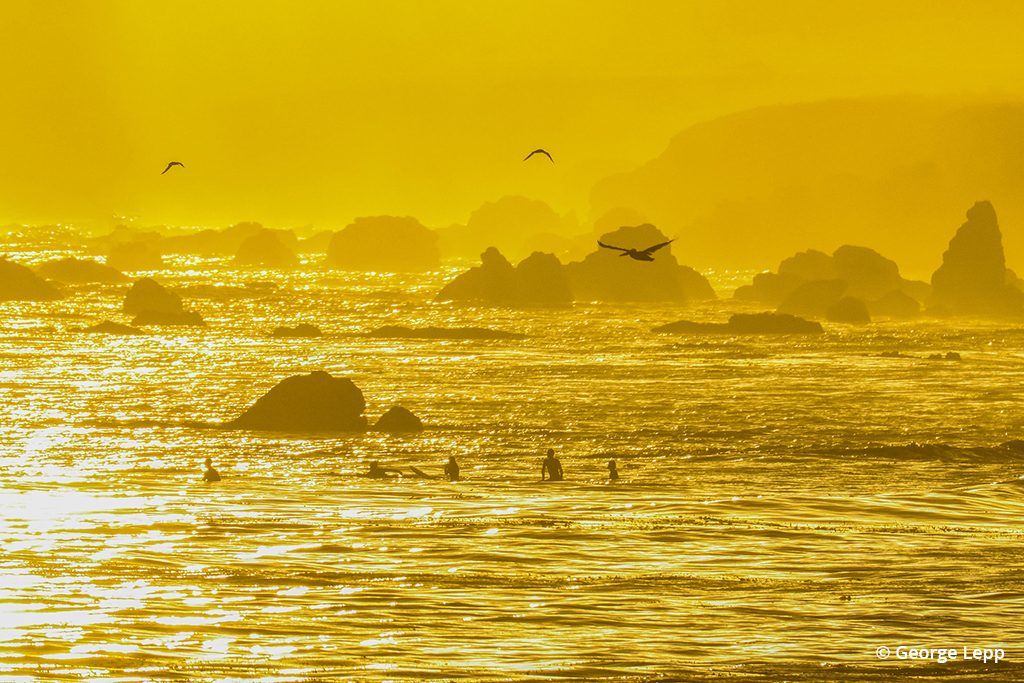
Surf’s Up. A long-telephoto scenic along the California coast at sunset shows a group of surfers waiting for the next wave to ride. To compress the scene, Lepp used the EOS 90D with an EF 600mm f/4L IS III USM lens with an Extender EF 2x III (1200mm, or an angle of view of 1920mm with the 1.6x crop factor of the camera’s APS-C sensor). Exposure: 1/3000 sec., ƒ/11, ISO 800.
On the other hand, the APS-C sensor crop is not an aid to accomplishing landscape photography with wide-angle lenses, where a 24mm prime lens will be the approximate equivalent in angle of view to a 40mm lens. The answer is a wide-angle zoom made specifically for the APS-C format (EF-S lenses), such as the EF-S 10-22mm, which is equivalent to a 16-35mm lens on a full-frame body.
Canon EOS 90D Review Conclusions
During this field review of the EOS 90D, I photographed architectural subjects, scenics along the Pacific coast, off-shore sea otters, birds in ground activity and flying at speed, and macro subjects using the focus bracketing feature in studio. I tested the camera with a variety of lenses, including the EF-S 18-135mm, EF 100mm f/2.8L USM macro, EF 100-400mm II f/4.5-5.6L and EF 600mm f/4 IS III, and I added the Extender EF 1.4x III and EF 2x III on the telephotos when needed.
The 90D worked well in all of these scenarios, but extended reach with telephotos is the advantage that convinced me to add it to my bag. My 100-400mm Mark II becomes a 160-640mm f/5.6. Add the Extender EF 1.4x III, and it reaches out to 896mm with AF still working. My EF 600mm f/4L becomes 960mm with the same incredible sharpness. Adding the 1.4x extender, the angle of view becomes 1344mm at f/5.6, or, with the EF 2x III extender, an incredible 1920mm that is still sharp. Multiply your own telephoto by the 1.6x crop factor to see what you can do with an APS-C sensor. Don’t forget to take along a tripod!
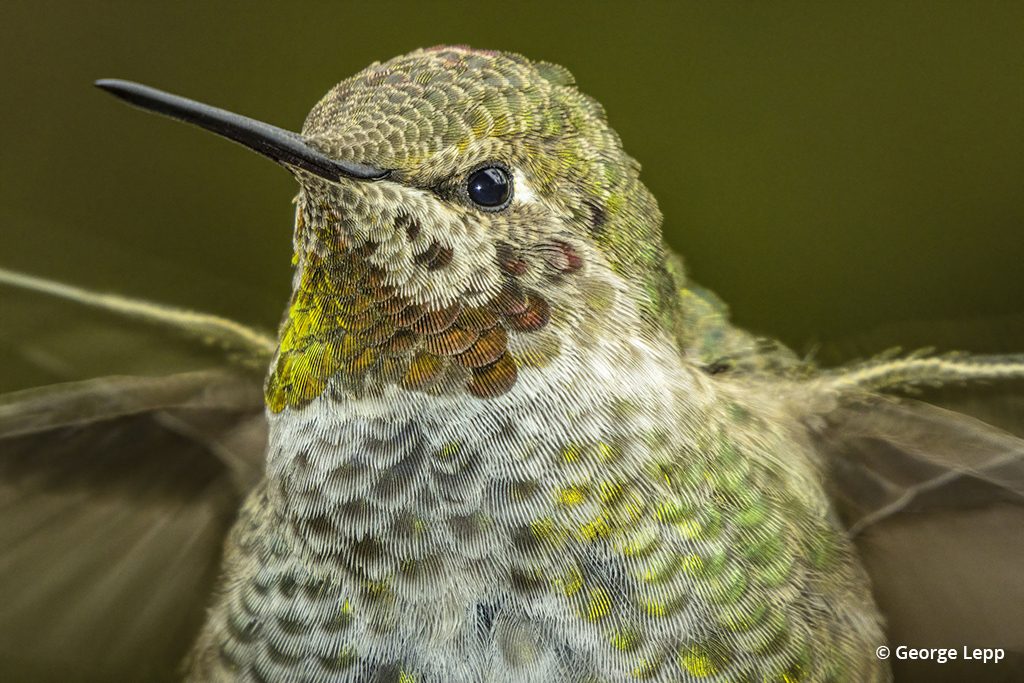
Feed Me. An Anna’s hummingbird comes to a feeder just outside a window at Lepp’s home. He placed the EOS 90D with the EF 100-400mm f/4.5-5.6L IS II USM lens at 400mm close to the window, added an Extender EF 2x III (800mm) and, with the crop factor of the APS-C sensor, 1280mm was attained to capture head-and-shoulder portraits of the diminutive bird. Exposure: 1/60 sec., ƒ/22, ISO 800.
For those photographers wanting a lighter, smaller advanced DSLR for nature and wildlife photography, the Canon EOS 90D delivers for a reasonable price. With the crop factor and higher ISO capability, this camera makes a great versatile backup body for a full-frame landscape and portrait rig. All you need is to look at the images in this review to see that the EOS 90D is an excellent field camera. And if you thought the DSLR was done because of the mirrorless revolution, think again.
The post Canon EOS 90D Review For Nature And Wildlife appeared first on Outdoor Photographer.

